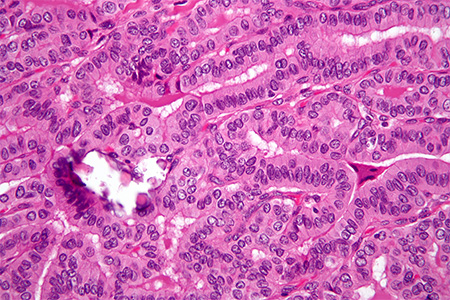Cancer Research Technology
 CRT is a specialist development and commercialization company, which aims to advance new discoveries in cancer research for the benefit of cancer patients. CRT is a wholly owned subsidiary of Cancer Research UK, the world's largest cancer charity, and has exclusive rights to intellectual property from Cancer Research UK funded research - more than £300M annually. The CRT Repository represents valuable investigative tools arising from such research, which CRT makes available to the worldwide research community through distribution by Taconic.
CRT is a specialist development and commercialization company, which aims to advance new discoveries in cancer research for the benefit of cancer patients. CRT is a wholly owned subsidiary of Cancer Research UK, the world's largest cancer charity, and has exclusive rights to intellectual property from Cancer Research UK funded research - more than £300M annually. The CRT Repository represents valuable investigative tools arising from such research, which CRT makes available to the worldwide research community through distribution by Taconic. The CRT models are stored at Taconic as cryopreserved materials. To access a line, researchers simply must sign a limited breeding agreement*, and then the line is recovered via derivation. Taconic can maintain live colonies of recovered lines on a contractual basis, or researchers may breed them at their own facility. Eliminating the time associated with the de-novo design and development of these mouse models provides a tremendous competitive advantage.
CRT Repository Benefits
- Speed: Live mice can be obtained in about 16 weeks after order. Lines are recovered from frozen sperm or embryos using state of the art embryological services.
- Cost: Low cost access to complex models.
- Full service: Easy access to Taconic services. Coupled with Taconic's core capability of Colony Management Solutions, the CRT repository lines can provide research labs with the animals they need to rapidly produce study data, without the additional work and cost of animal colony production and maintenance.
New Model Details
- Bmx-Cre-ERT2 mouse: Exhibits tissue-specific expression using the Bmx promoter of an inducible Cre-ERT2 fusion protein, enabling tamoxifen-induced Cre recombinase activity in arterial endothelial cells. The Bmx-Cre-ERT2 mouse is an ideal tool in the study of gene function in angiogenesis, atherosclerosis and neovascularization.
- Gstp1/2 double knockout mouse: Useful for the in vivo study of Gstp1/2 (regulator of protein synthesis/degradation) function in tumorigenesis, drug metabolism and toxicity; Can be used as a disease model for drug metabolism and toxicity; tumorigenesis model (skin, lung) (chemically induced). Learn more: Henderson CJ et al. 1998. Increased skin tumorigenesis in mice lacking pi class glutathione S-transferases. Proceedings of the National Academy of Sciences USA. 95:5275-80.
- Floxed Jagged1 Mouse: Jagged1 gene with loxp sites flanking exons 4 & 5, enabling conditional cre-mediated knockout. The conditional Jag1 knockout is useful for in vivo studies focused on tissue specific Jag1 knockouts. This line can also be used to study Notch signaling. Learn more: Brooker et al. 2006. Notch ligands with contrasting functions: Jagged1 and Delta1 in the mouse inner ear. Development. 133:1277-86.
- Prox1-CreERT2 Mouse: Transgenic mouse expressing tamoxifen-inducible creERT2 under the control of Prox1 gene promoter. Allows specific and temporally controlled cre-loxP recombination (gene inactivation/activation) in Prox1-expressing tissues, including lymphatic endothelia. Efficient recombination is observed during all developmental stages (embryonic, postnatal) and in adults. Learn more: Bazigou et al. 2011. Genes regulating lymphangiogenesis control venous valve formation and maintenance in mice. J Clin Invest. Aug 1; 121(8): 2984-2992.
- Ung Knockout Mouse: Knockout of the Ung gene. This line is useful for the in vivo study of Ung function and DNA mismatch mutation during DNA synthesis. Mice develop B cell lymphoma and are abnormal in their immune response. Learn more: Nilsen et al. 2003. Gene-targeted mice lacking the Ung uracil-DNA glycosylase develop B-cell lymphomas. Oncogene. 22:5381-86.
- Dr3 Knockout Mouse: The Dr3 (Tnfrsf25) -/- mouse exhibits complete knockout of Dr3, a death domain-containing tumor necrosis factor receptor which mediates one of the key regulators of the cell division cycle. Negative selection and anti-CD3-induced apoptosis are significantly impaired in Dr3-null mice. Learn more: Wang et al. 2001. DR3 regulates negative selection during thymocyte development. Molecular and Cellular Biology. 21:3451-61.















.jpg)

.jpg)
.jpg)
.jpg)
.jpg)





.jpg)


.jpg)
.jpg)

.jpg)


.jpg)





.jpg)

.jpg)



